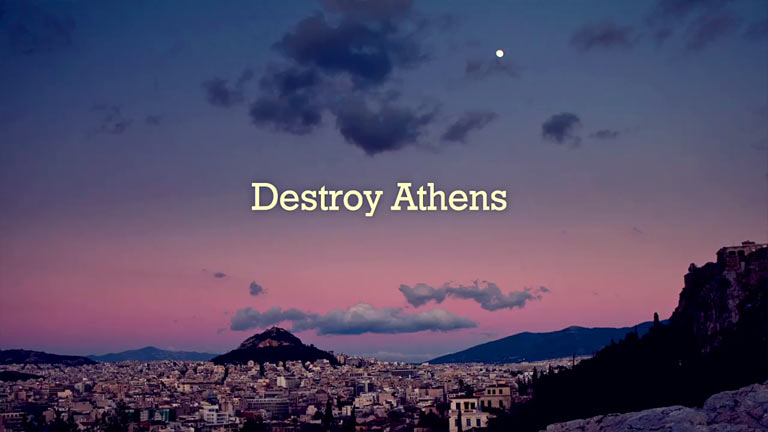Who, what, where, why and when: In the examination of current topical trends, issues and circumstances, deconstruction of events gone by or just pure observation of our fellow inhabitants of the world, the digital space is lending itself as a fully malleable platform to present non-fiction storytelling.
News correspondents and film makers are upping the ante in bringing true stories into the light for society’s consideration through collaborative journalism, interactive film and additional media assets mined from social media and the depths of archives to create immersive documentary experiences.
A follow up to our Top 10 of Our Favourite Web Documentaries we did last year, here are our current top 5 favorite picks of web docs that cover true stories while shaping the digital audio- visual storytelling landscape.
1. Out my window
FACT: 180,000 people move into cities on a daily basis and it was estimated in 2010 that half the world’s population live in urban areas. That’s about 3 billion people living on the earth’s surface dealing with life in a city. With an abundance of the world’s population living in densely populated areas, appropriate urban planning that rears physically and psychologically healthy societies while considering sustainability is a hot topic.
Czech-Canadian filmmaker Katerina Cizek created a web documentary to present a sample of who inhabits the concrete residential highrises throughout the world, their prized possessions, their stories and what life, literally, looks like from their vantage point.
Using a patchwork of imagery and audio, once you click on a location on the map, you can take a 360 degree peek through the curtains of a highrise home in some of our planet’s most fascinating cities – with permission, of course.

2. A Year at War
It’s 1995, the growth of the information super highway is in full swing. Media analysts predict the death of the printed newspaper, and the question hangs: what’s in store for the delivery of news in the indisputable rise of online culture?
Fast forward to a time when thirty thousand American soldiers went to war in Afghanistan, The New York Times created a web feature to document the plight of soldiers from First Battalion, 87th Infantry of the 10th Mountain Division. Reporter James Dao went front line to follow this band Of troops from March 2010 to March 2011 and created something akin to a digital news scrapbook.
Telling stories from the 3 different view angles of life on the field, individual soldier profiles and G.I. generated media albums, this web space features mini video documentaries, grabs of Facebook status updates, email snippets, smartphone footage and photo montages of a snippet of time on the line for these military personnel in Northern Afghanistan.
Uniquely harnessing the digital space to cement itself as an integrated media powerhouse, The NY Times created an audio-visual, interactive project that captivates with the hard facts and raw emotion of life as a professional soldier.
3. The Prism
Presented in English and Greek, this collaborative documentary is a multi-dimensional collection of images, videos and that form a broad spectrum of viewpoints from the Greek landscape in the wake of the country’s financial and political boiling point in the Winter of 2010.
A hybrid mentorship program, media investigation and art project, friends and video journalists Nikos Katsaounis and Nina-Maria Paschalidou came home from abroad to their beloved homeland and recruited 14 photojournalists and videographers to document the resoundingly visible evidence of widening cracks in Greek society.
Following ordinary citizens of Greece swept up in the complexities of demand for change and the repercussions of sudden paradigms shifts, this project covers topics relevant to underground sub culture to basic economic logic. With aims of breeding a new age of highly aware multimedia storytellers, The Prism features twenty seven stories which create a gateway into the new era of feature journalism.
4. 17.10.61
A digital exploration of a dark day in Paris when the persecution of Algerian-French citizens came to a climax on the 17th of October 1961, the uniqueness of this French documentary lies within it’s entirely logical and engaging navigation and arrangement of story-telling assets.
Created by a collective of urban artists that dabble with alternate cultural and political uses for technology, it recounts the events that unfolded when the then- head of the Parisian police ordered the attack of 30,000 demonstrators crying out for equality.
Told through eight seperate eye witness accounts which have been recounted by actors, the audience can navigate by character or by way of an interactive map of Paris which will take them to a timeline of video, archive footage, interviews with historians, newspaper clippings and photography.

5. Exile without end: Palestines in Lebanon
What are the repercussions of being stateless? Complicated and challenging issues arise from the absence of a concrete identity through recognised citizenship in a state or nation, and Canadian broadcasting entity, CBC, delved deep into the subject.
News correspondants spent two weeks in Shatila, a Palestinian refugee camp in Beirut. Built in 1948 and measuring one square kilometre in size, it’s 12,000 inhabitants are made up of four generations of refugees without official papers.
A micro-state in itself, this web documentary can be navigated through an aerial map highlighting key locations within the camp, defined places of importance to the community. Short video interviews profile the young, the old and a sample of those that have cornerstone roles in this “temporary” society capturing their lives of endless uncertainty.
 Submarine Channel
Submarine Channel
